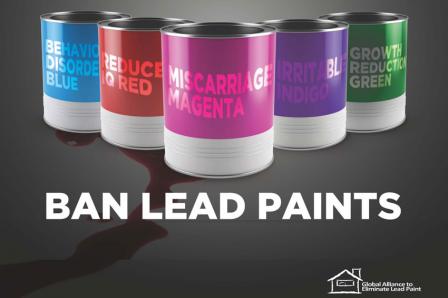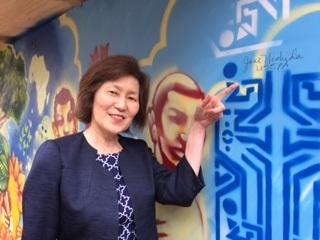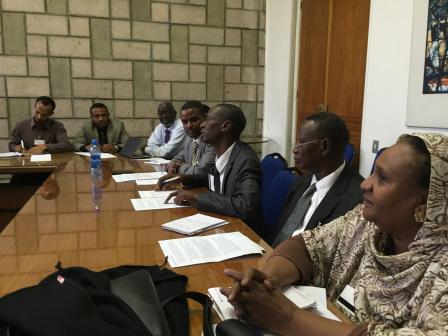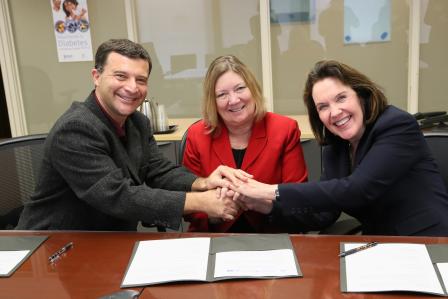EPA Leadership in the Lead Paint Alliance

The Global Alliance to Eliminate Lead Paint ("Lead Paint Alliance" or "the Alliance") is a voluntary collaborative partnership of governments, private industry, and NGOs that works to promote the phase-out of the use of lead in paint. The Lead Paint Alliance was established in 2009 and the United Nations Environment Programme (UNEP) and the World Health Organization (WHO) serve as the joint secretariat. EPA and the CDC are the current co-chairs of the Lead Paint Alliance.
The main objective of the Alliance is to prevent children’s exposure to lead via paints containing lead, particularly those in countries where lead paint is still manufactured and is commonly used. The goal of the Lead Paint Alliance is to promote the establishment of lead paint laws globally by 2020. The U.S. banned lead in paint in the 1970s and is providing technical and policy expertise to developing countries to put in place lead paint laws. Governments, private industries, and NGOs can support this goal by becoming a partner of the Lead Paint Alliance.
Resources:
- Visit the official website of the Lead Paint Alliance. Exit
- View the Lead Paint Alliance's Toolkit for Establishing Laws to Control the Use of Lead in Paint Exit
- WHO map: Regulations and controls on lead paint Exit
- New report on global status of lead in paint from Lead Paint Alliance partner IPEN: Global Lead Paint Report (2016) Exit
- Lead Paint Alliance Video: Ban Lead Paint Exit
- Strategic Approach to International Chemicals Management (SAICM) Video: Lead in Paint: Emerging Policy Issue Exit
Click the tabs below to learn more.
December 2016: The Lead Paint Alliance held a Workshop on the Development of National and Regional Regulations and Standards on Lead in Paints in the Central and West African Region in Yaounde, Cameroon on December 8-9, 2016. The workshop was organized by Alliance partner IPEN and co-sponsored by EPA and the United Nations Environment Program. Attendees included government and environmental NGO representatives from Central and West African countries. EPA presented information about how to establish effective lead paint laws.
October 2016: The 4th annual International Lead Poisoning Prevention Week of Action took place from October 23-29, 2016. EPA joined the World Health Organization (WHO), the United Nations Environment Program (UNEP) and other organizations around the world to promote banning lead paint by 2020 and to raise awareness of the activities of the Lead Paint Alliance. This year’s Week of Action had the most participation ever, with 42 countries reporting more than 100 activities. UNEP, WHO, EPA and IPEN worked collaboratively to develop the program's campaign package, including customizable materials in six UN languages. As part of the Week of Action, EPA coordinated an impactful social media campaign.
- Learn more about the 2016 International Lead Poisoning Prevention Week of Action.
- View EPA's social media content for the most recent Week of Action.
- Official website: International lead poisoning prevention week of action. Exit
September 2016: EPA sponsored the Lead Paint Alliance Workshop for the East African Community on the Development of National and Regional Regulations on Lead in Paint, which took place in Dar es Salaam, United Republic of Tanzania. The workshop was organized as a follow-up to the December 2015 East Africa Sub-regional Workshop on the Establishment of Legal Limits on Lead in Paint in Ethiopia (details below). Experts, stakeholders and key governmental officials from the East African Community and select other African countries came together to discuss next steps toward the regional harmonization of a lead paint standard for the East African community.
 Jane Nishida, Principal Deputy Assistant Administrator for International and Tribal Affairs, signs the graffiti exhibit in support of eliminating lead in paint at UNEA2.
Jane Nishida, Principal Deputy Assistant Administrator for International and Tribal Affairs, signs the graffiti exhibit in support of eliminating lead in paint at UNEA2.May 2016: EPA participated in several activities promoting the Lead Paint Alliance as part of the second United Nations Environment Assembly (UNEA), which took place on May 23-27, 2016. EPA's activities at UNEA included speaking in the inaugural press event with UNEP Director Achim Steiner; presenting in a media roundtable on the topic of lead; and providing the keynote talk at the "Phasing Out Lead in Paint in Four Years" side event. Jane Nishida, Principal Deputy Assistant Administrator for International and Tribal Affairs, spoke to environment ministers about the importance of eliminating lead in paint as part of the High Level Segment on Healthy Environment, Healthy People. In partnership with New York University (NYU), EPA also launched a new interactive map presenting the economic cost of childhood lead exposure in low and middle income countries. In addition, EPA officials participated in a creative graffiti art exhibit promoting the importance of lead-free paint.
- View presentations from the "Four Years to Phase Out Lead in Paint Worldwide" side event Exit
- View the NYU interactive map: Economic Costs of Childhood Lead Exposure in Low and Middle Income Countries Exit
- Watch video: Jane Nishida presents on behalf of the Lead Paint Alliance in the Healthy Environment, Healthy People Roundtable Exit
- Watch video: Dr. Leonardo Trasande of New York University presents about eliminating lead in paint in the Healthy Environment, Healthy People Roundtable Exit
 National representatives discuss establishing legal limits on lead paint at the December African sub-regional workshop in Addis Ababa, Ethiopia.
National representatives discuss establishing legal limits on lead paint at the December African sub-regional workshop in Addis Ababa, Ethiopia.December 2015: The East Africa Sub-regional Workshop on the Establishment of Legal Limits on Lead in Paint took place at the United Nations Conference Centre in Addis Ababa, Ethiopia. The workshop was organized to take place just before the United Nations Environment Programme (UNEP)/IPEN Regional Lead Paint Elimination Project in Africa Workshop. At the workshop, government officials and stakeholders from 15 African countries agreed on the need to phase out the use of lead in paint and harmonize standards across Africa.
- Presentations and additional workshop information are available on the website of the Lead Paint Alliance. Exit
- Read the press release (2 pp, 236 K, About PDF) Exit from UNEP and IPEN.
 Representatives of the Pan American Health Organization, the U.S. Centers for Disease Control, and the U.S. EPA sign a statement of intent for collaboration on lead paint in Latin America and the Caribbean. (October 2015)
Representatives of the Pan American Health Organization, the U.S. Centers for Disease Control, and the U.S. EPA sign a statement of intent for collaboration on lead paint in Latin America and the Caribbean. (October 2015)October 2015: Pan American Health Organization (PAHO), EPA and CDC sign new statement of intent for collaboration in Latin America and the Caribbean.
September 2015: EPA led a team of Lead Paint Alliance partners to develop and launch a regulatory toolkit for establishing laws to control the use of lead in paint. Launched at the International Conference on Chemicals Management (ICCM4), the toolkit was modeled after a similar regulatory toolkit Exit created by the Partnership for Cleaner Fuels and Vehicles. It will be disseminated through international regional workshops, beginning with a workshop in East Africa,Exit planned for December 2015.
April 2015: The Lead Paint Alliance, co-led by the United Nations Environment Programme (UNEP) and the World Health Organization (WHO), announced the goal of eliminating lead paint around the world by 2020, at the Global Citizen 2015 Earth Day organized by the Global Poverty Project and the Earth Day Network. Read more about the launch: Global Alliance Announces Goal to Eliminate Lead in Paint by 2020 Exit
Learn more:
- National Lead Poisoning Prevention Week
- Explore report Exit and video Exit from UNEP on Lead in Paints

Lead exposure is a well-known source of injury to human health, particularly to the health of children and to workers in lead industries. No level of exposure to lead is considered safe. Children exposed to high levels of lead may experience sensory, motor, cognitive and behavioral impacts, including learning disabilities; attention deficits; disorders in coordination, visual, spatial and language skills; and anemia.
Using leaded paint creates potential lead poisoning problems for the future. Most poisoning from lead paint occurs when infants and children ingest the dust of old lead paint as it deteriorates of chips off surfaces. Thus, lead paint poses a health risk long after the initial painting is done. That is why we want to work together to make sure that no paints contain lead.
Alternatives to lead paint already exist. Although lead paint is still produced and sold in many countries around the world, a simple, cost-effective alternative exists. Paints without added lead are as effective and economically competitive as their lead counterparts. In fact, a recent study published by UNEP and the NGO IPEN shows that in many places where lead paint is sold, lead free alternatives exist for similar prices.
About the Global Alliance
The U.S. EPA is an active member, and Advisory Group Chair, of the Global Alliance to Eliminate Lead Paint Exit. The Global Alliance is a global partnership of Governments, private industry, and NGOs that works to promote the phase-out of the use of lead in paint.
The work of the Global Alliance includes raising awareness of the dangers lead poisoning poses to human health; and helping developing countries build regulations to stop the manufacture, import, sale and use of paints containing lead.
- The overall goal of the partnership is to prevent children’s exposure to lead via paints containing lead and to minimize occupational exposures to lead in paint.
- The broad objective is to phase out the manufacture and sale of paints containing lead and eventually to eliminate the risks from such paint.
As Chair of the GAELP Advisory Group, U.S. EPA is working to help make other nations aware of the dangers of lead paint and ways to address this problem. The Global Alliance is focusing its efforts on helping countries without existing lead paint laws put effective legislation/regulations in place.
The Global Alliance is a led by a joint secretariat of the United Nations Environment Programme (UNEP) and the World Health Organization (WHO). It was established at the International Conference on Chemicals Management at its second session (ICCM2) as one initiative to implement the Strategic Approach to International Chemicals Management (SAICM). Exit
This initiative promotes the implementation of paragraph 57 of the Plan of Implementation of the 2002 World Summit on Sustainable Development (PDF) Exit, which states: to phase out lead in lead-based paint and in other sources of human exposure, work to prevent, in particular, childrens exposure to lead and strengthen monitoring and surveillance efforts and the treatment of lead poisoning.
Useful Links
- EPA's International Partnerships on Lead
- National Lead Poisoning Prevention Week
- International Lead Poisoning Prevent Week of Action Exit (hosted by the World Health Organization) Exit
- Toolkit for Establishing Laws to Control the Use of Lead in Paint Exit
- Global Alliance to Eliminate Lead Paint (GAELP) Exit
- United Nations Environment Programme (UNEP) Exit
- Plan of Implementation of the 2002 World Summit on Sustainable Development (PDF) Exit
- Strategic Approach to International Chemicals Management (SAICM) Exit
For additional information on EPA's work with the Lead Paint Alliance, contact:
Angela Bandemehr
U.S. Environmental Protection Agency
Office of International and Tribal Affairs (2670R)
1200 Pennsylvania Ave., NW
Washington, DC 20460
E-mail: bandemehr.angela@epa.gov
(202) 564-1427
